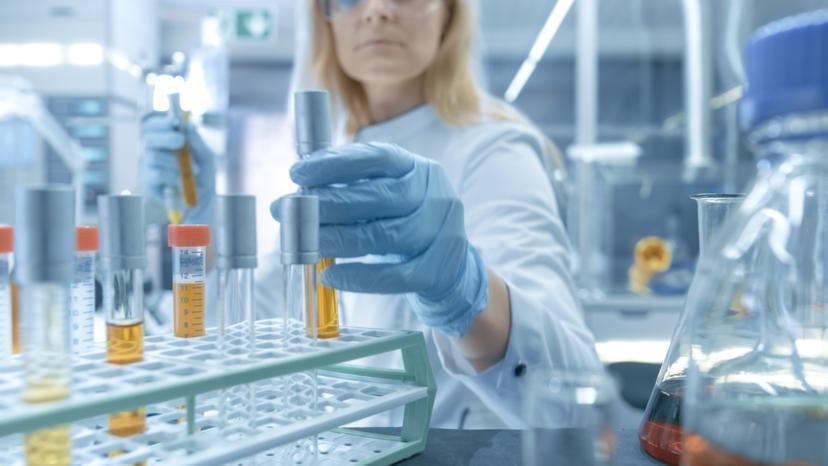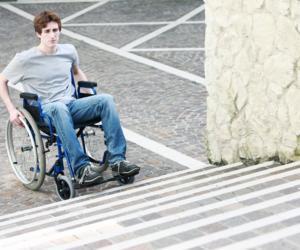Dogs Show Improvement After Gene Therapy for Muscular Dystrophy

Duchenne muscular dystrophy is a progressive disease that causes body muscle weakness and atrophy as a result of a deficiency in dystrophin protein. A scientist at the University of Washington, the University of Missouri, LLC, Solid Biosciences, and NCATS have developed a gene transfer approach to deliver modified dystrophin genes to muscle. The transfer approach uses the adeno-associated virus vector. The modified dystrophin genes restored muscle strength in mouse models. These mouse models mimicked various defects seen in Duchenne muscular dystrophy patients. This study was published in a journal on July 27.
It can be difficult to accept when our lovely do gets old. It is even worse if a horrible disease such as Duchenne muscular dystrophy is behind it all.
Dongsheng Duan, a senior author of this study, said that Duchenne muscular dystrophy confines young boys to wheelchairs by the time they become teens. Dongsheng, who is also a medical scientist at the University of Missouri believes that the results of the study provide good evidence to support the evaluation of adeno-associated virus dystrophin gene transfer in patients with Duchenne muscular dystrophy.
The goal of gene therapy
The primary goal of these gene therapy approaches is to restore functional versions of dystrophin protein. This protein offers stability to muscle cells when they contract and is important for muscle health. There hasn’t been any cure for the disease, and most patients go for treatment to help in controlling symptoms and improve the quality of life. Adeno-associated virus is a good gene transfer vehicle since some types of the virus can deliver genes to muscles and show clinical potential in treating inherited diseases like spinal muscular atrophy.
The adeno-associated virus has limited packaging capacity, and scientists designed a miniature version of the dystrophin gene which consists of critical DNA sequences that restore muscle function. When this micro-dystrophin adeno-associated virus is delivered, it ameliorates muscle disease in mouse models of Duchenne muscular dystrophy. The earlier versions of the adino-associated virus were limited since they didn’t have the nNOS-binding domain. These nNOS-binding domains facilitate blood perfusion during contraction of the muscle.
To deal with this limitation, Dongsheng Jeffrey Chamberlain and another scientist at the University of Missouri, developed a new amino-associated virus micro-dystrophin vector which contains the Nnos-binding domain. Jeffrey Chamberlain is a researcher of muscular dystrophy at the University of Washington. This new vector has a novel regulatory cassette that drives the expression of the dystrophin gene in muscle cells.
Mouse trials
To demonstrate the clinical utility of the approach, Dongsheng and another scientist from the university tested the new vector in a mouse model mimicking Duchenne muscular dystrophy. After the adeno-associated virus was injected and stayed for fifteen weeks, scientists detected high levels of micro-dystrophin protein in all the muscles of all the mice treated. It was evident that micro-dystrophin therapy reduced muscle hardening, scarring, and inflammation. Also, in vivo and ex Vivo examination of two leg muscles showed that micro-dystrophin normalized muscle force. The mouse had limitations and prevented the scientist from assessing therapeutic effects on the heart function.
Duan said that a lot needs to be studied about dystrophin protein, dystrophin gene, gene transfer vectors, and Duchenne muscular dystrophy mechanisms. He also said that future studies would help in developing an effective therapy to treat DMD.
Fortunately, a team of researchers has been working to develop gene therapy. This therapy could help humans in the future. In their solution, it involves a gene therapy that restores muscle strength and control clinical symptoms. This can be achieved by a shorter version of the dystrophin gene with 4,000 base pairs. This gene is combined with a viral vector and then injected into patients.
Testing in London
George Dickson, a professor at the University of London, said that there is no cure for this disease and that their work has mainly involved developing a functional copy of a damaged gene in the lab. They then use the virus to carry the gene into where the muscles are affected. This makes gene therapy. So far, the gene treatment has been tested on twelve retrievers affected by DMD. A single dose made the dog’s dystrophin production to return to normal levels. Dystrophin is a protein that is responsible for maintaining the strength and integrity of muscles. This was carried years back and has proven that this treatment is a permanent treatment.
Dickson said that they had treated several dogs that were affected by the condition with single gene therapy. With the correct dose, the dogs have shown positive results as they have looked healthy and active for more than three years after treatment. After this research, researchers have hoped to extend the finding to children as they have the same weight and show similar symptoms to canines.
Dickson said that the goal to use this gene therapy in boys suffering from Duchenne muscular dystrophy disease. He said that they have to scale up the production of this gene therapy medicine to be used for human use. They have to complete a safety test and find patients for clinical trials. This could prove the importance of gene therapy in medicine.
The main challenge faced by the team was that the dystrophin gene was big and the virus could not carry it. A virus carries some amount of DNA. The scientist thinks that using micro and mini-dystrophin gene has its limitations.
The scientist has addressed this challenge by developing a trans-splicing technology. This technology lets the cells join various pieces of RNA to make protein. The dystrophin gene is in two or three parts making dual or triple trans-splicing. Each piece is inserted into each virus. If the three viruses infects one cell, parts of the dystrophin gene join to form full-length dystrophin protein.
The study is aimed at improving trans-splicing technology so that gene delivery to the muscle can be increased. This also increases trans-splicing efficiency. Since the immune system can destroy the virus delivering the gene, the scientist has to work to minimize the possibility of gene therapy virus being attacked. The immune system cannot differentiate between a potential infection and gene therapy.
How does this research benefit patients?
Continued research of the therapy will lead to improved gene therapy for Becker and Duchenne muscular dystrophies that will assist in the production of full-size protein.
This study gives hope to children with muscular dystrophy as there would be chances of trying the same gene in humans which can prove effective. It gives them hope since repairing defective genes improved a dog’s ability to walk, jump and run.
The scientist who participated in the research hopes that sufficient funds will be awarded for the research to go into clinical trials.
Sources
https://www.digitaltrends.com/cool-tech/gene-therapy-golden-retriever-dog/
















